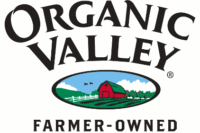Look For Increased Demand For Organic Milk in 2010
While 2009 was a tough year for milk sales in general, prospects indicate that soon, the organic milk sector may see surpluses turn into shortages.
While 2009 was a tough year for milk sales in general, prospects indicate that soon, the organic milk sector may see surpluses turn into shortages.
Organic dairy sales in 2009 represented 14% of the $24.8 billion market for organic food, and made up slightly more than 5% of all U.S. sales of dairy products, according to the Organic Trade Association’s 2010 Organic Industry Survey. U.S. organic dairy product sales actually experiencing a 1% decline from 2008 sales, dropping from $3.607 billion to $3.573 billion. However, the overall dairy market shrank 7%, to $68 billion, in 2009 – a 6% greater loss than the organic dairy category and a bigger dollar loss ($4.7 billion) than the entire organic dairy sector.
On top of the distressed economy, consumers saw a widening price gap between conventional and organic milk, with conventional milk hitting an all-time pricing low and organic farmers facing high organic feed costs. Meanwhile, increased organic milk production exceeded demand.
According to figures from the U.S. Department of Agriculture’s Economic Research Service, the number of certified organic milk cows on U.S. farms rose from 38,000 in 2000 to 249,766 by the end of 2008, the latest year for which data are available. More cows plus the price gap resulted in oversupply of organic milk. This, however, is not expected to last.
According to Horizon Organic, consumer demand for organic milk is once again trending up in most regions of the United States.
“Last year, when demand for organic was at an all-time low, we asked our producers to voluntarily reduce milk volume by about 5%. Based on market conditions, we are now pleased to ask farmers to increase milk volume to help us meet higher consumer demand. The requested increase varies by 5 to 10% based on the region,” according to a Horizon Organic spokeswoman, who added, “Over the last couple of months, sales for all organic milk category are up 2.5%. Organic milk sales are strong everywhere but in the West.”
Agreeing that oversupplies are primarily in the West, Theresa Marquez of Organic Valley Family of Farms predicted that situation soon will correct itself. “California used to be the leading milk production state, but with a shortage of water, it is becoming an unfriendly place to raise livestock,” she said. “We are going to see during 2011, and going into 2012, that organic milk supplies are tight, and there will be a need to once again increase supplies of organic milk.”
A new final rule reinforcing that organic livestock production is pasture-based could affect who stays in business.
In mid-February, the USDA announced the long-awaited publication of the final access to pasture rule (www.ota.com/pics/documents/pasture_final_rule.pdf), set to go into effect in mid-June, in time for this year’s grazing season.
This final rule clearly defines access to pasture for organic ruminant livestock, where animals are not confined and are actively grazing on pasture during the grazing season, and sets a mechanism into place for strict regulation and enforcement. This will help enable producers and certifying agents to consistently implement National Organic Program regulations. The minimum number of grazing days must be at least 120 days, with weather and other factors making the season’s dates variable.
Meanwhile, consumers can look for additional product innovation for organic dairy products during 2010. For instance, Organic Valley now offers organic “Omega Milk” containing all-natural omega-3 fatty acids alpha-linolenic (ALA), docosahexaenoic (DHA), and eicosapentaenoic (EPA) acids. It also has introduced three pourable organic low-fat yogurts that contain probiotic cultures to boost digestive and immune systems. Horizon Organic, meanwhile has added low-fat chocolate milk plus DHA omega-3, using a vegetarian form of algal long-chain docosahexaenoic acid, to its offerings.
Such innovation is coming at a time when the President’s Cancer Panel Report, released in early May (http://deainfo.nci.nih.gov/advisory/pcp/pcp08-09rpt/PCP_Report_08-09_508.pdf), exhorts consumers to choose food grown without pesticides or chemical fertilizers, antibiotics, and growth hormones to help decrease their exposure to environmental chemicals that can increase their risk of contracting cancer.
Organic products avoid the use of these chemicals. In fact, organic production and processing is the only system that uses certification and inspection to verify that these chemicals are not used on the farm all the way to our dinner tables. Thus, those seeking to minimize their exposure to these chemicals and follow the recommendations of the President’s Cancer Panel can look for the USDA Organic label on dairy products wherever they shop.
Christine Bushway is executive director of the Organic Trade Association.
While 2009 was a tough year for milk sales in general, prospects indicate that soon, the organic milk sector may see surpluses turn into shortages.
Organic dairy sales in 2009 represented 14% of the $24.8 billion market for organic food, and made up slightly more than 5% of all U.S. sales of dairy products, according to the Organic Trade Association’s 2010 Organic Industry Survey. U.S. organic dairy product sales actually experiencing a 1% decline from 2008 sales, dropping from $3.607 billion to $3.573 billion. However, the overall dairy market shrank 7%, to $68 billion, in 2009 – a 6% greater loss than the organic dairy category and a bigger dollar loss ($4.7 billion) than the entire organic dairy sector.
On top of the distressed economy, consumers saw a widening price gap between conventional and organic milk, with conventional milk hitting an all-time pricing low and organic farmers facing high organic feed costs. Meanwhile, increased organic milk production exceeded demand.
According to figures from the U.S. Department of Agriculture’s Economic Research Service, the number of certified organic milk cows on U.S. farms rose from 38,000 in 2000 to 249,766 by the end of 2008, the latest year for which data are available. More cows plus the price gap resulted in oversupply of organic milk. This, however, is not expected to last.
According to Horizon Organic, consumer demand for organic milk is once again trending up in most regions of the United States.
“Last year, when demand for organic was at an all-time low, we asked our producers to voluntarily reduce milk volume by about 5%. Based on market conditions, we are now pleased to ask farmers to increase milk volume to help us meet higher consumer demand. The requested increase varies by 5 to 10% based on the region,” according to a Horizon Organic spokeswoman, who added, “Over the last couple of months, sales for all organic milk category are up 2.5%. Organic milk sales are strong everywhere but in the West.”
Agreeing that oversupplies are primarily in the West, Theresa Marquez of Organic Valley Family of Farms predicted that situation soon will correct itself. “California used to be the leading milk production state, but with a shortage of water, it is becoming an unfriendly place to raise livestock,” she said. “We are going to see during 2011, and going into 2012, that organic milk supplies are tight, and there will be a need to once again increase supplies of organic milk.”
A new final rule reinforcing that organic livestock production is pasture-based could affect who stays in business.
In mid-February, the USDA announced the long-awaited publication of the final access to pasture rule (www.ota.com/pics/documents/pasture_final_rule.pdf), set to go into effect in mid-June, in time for this year’s grazing season.
This final rule clearly defines access to pasture for organic ruminant livestock, where animals are not confined and are actively grazing on pasture during the grazing season, and sets a mechanism into place for strict regulation and enforcement. This will help enable producers and certifying agents to consistently implement National Organic Program regulations. The minimum number of grazing days must be at least 120 days, with weather and other factors making the season’s dates variable.
Meanwhile, consumers can look for additional product innovation for organic dairy products during 2010. For instance, Organic Valley now offers organic “Omega Milk” containing all-natural omega-3 fatty acids alpha-linolenic (ALA), docosahexaenoic (DHA), and eicosapentaenoic (EPA) acids. It also has introduced three pourable organic low-fat yogurts that contain probiotic cultures to boost digestive and immune systems. Horizon Organic, meanwhile has added low-fat chocolate milk plus DHA omega-3, using a vegetarian form of algal long-chain docosahexaenoic acid, to its offerings.
Such innovation is coming at a time when the President’s Cancer Panel Report, released in early May (http://deainfo.nci.nih.gov/advisory/pcp/pcp08-09rpt/PCP_Report_08-09_508.pdf), exhorts consumers to choose food grown without pesticides or chemical fertilizers, antibiotics, and growth hormones to help decrease their exposure to environmental chemicals that can increase their risk of contracting cancer.
Organic products avoid the use of these chemicals. In fact, organic production and processing is the only system that uses certification and inspection to verify that these chemicals are not used on the farm all the way to our dinner tables. Thus, those seeking to minimize their exposure to these chemicals and follow the recommendations of the President’s Cancer Panel can look for the USDA Organic label on dairy products wherever they shop.
Christine Bushway is executive director of the Organic Trade Association.
Looking for a reprint of this article?
From high-res PDFs to custom plaques, order your copy today!





